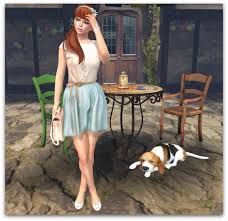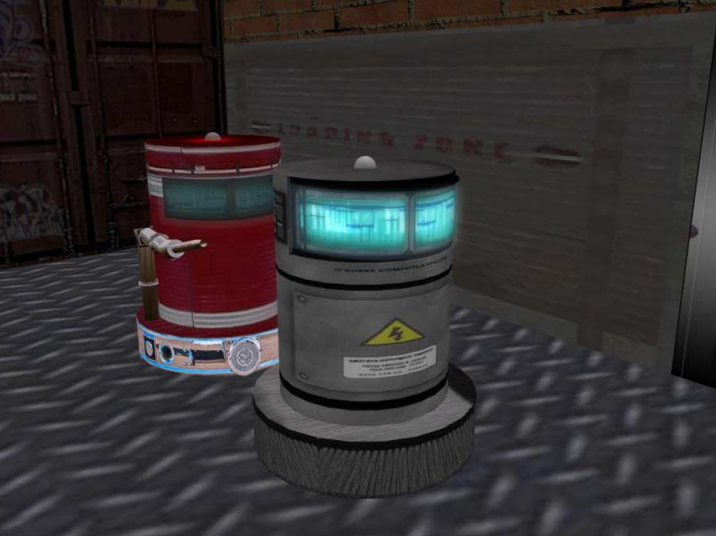
The History of SecondLife
SecondLife is an online virtual world, Second Life is an online virtual world, developed by San Francisco–based Linden Lab and launched on June 23, 2003. SecondLife is described well in this Wikipedia article.
Linden Lab claims that SecondLife is a great place to conduct work as well as engage in entertainment. After SecondLife's "stagnation", a SecondLife resurgence has been recently predicted.

SecondLife has been studied for its use in various situations, for instance Ahmen Alenezi evaluated SecondLife as an educational tool. David Atkinson explored whether SecondLife could be used to study how humans would react to first-responder robots, such as the ones pictured below.

Excerpts from
What Happens When Digital Cities Are Abandoned?
When Second Life launched in 2003, the world was captivated by visions of Neal Stephenson's Snow Crash come to life. The virtual world isn't a game--it's a venue, a platform, a plot of undeveloped land, a blank canvas, an open world. Users make of it what they will.
In 2006, an avatar was featured on the cover of Business Week magazine as part of an interview about a million-dollar land management business. People were swept up in a great wave of excitement and possibility. Universities and corporations flocked to build huge structures, including full-size stadiums and digital recreations of their real-life buildings.
"It's never exactly the same. It fragments and splinters the whole community as it existed—does it ever really exist anymore?"
But that was nearly 10 years ago. I wondered: what happened to all of those buildings? Were people still making use of them? So I logged in. The world of Second Life, it turns out, is not abandoned. Estimates put the current active user-base around 600,000 members; in its heyday, it boasted between 60 and 80 thousand simultaneous logins. There are often a handful of people in most of the spaces you'll visit, but it's easy to find privacy. Here and there are signs that point to its lack of people: "space for rent", "band wanted." But the sheer variety of environments, and the obvious care that people put into them, remains stunning.
There are moments in Second Life where the artifice is obvious. Not just when it's loading, building up the world from flat planes to polygons to intricate, textured shapes — but when you realize that everything is pristine, unlike real-world counterparts. It brings to mind the words of Philip K. Dick describing the detritus that's started taking over the largely-abandoned cities in Do Androids Dream of Electric Sheep?
Kipple is useless objects, like junk mail or match folders after you use the last match or gum wrappers of yesterday's homeopape. When nobody's around, kipple reproduces itself. For instance, if you go to bed leaving any kipple around your apartment, when you wake up the next morning there's twice as much of it. It always gets more and more.
There's no kipple in Second Life; no tumbling, ivy-covered walls, or pools of stagnant water, no gum wrappers or cigarette cartons slowly disintegrating.
Removed from organic decaying processes, the only ruins in this world, including simulacrum of piles of dirt and construction vehicles, are ones that have been deliberately built and placed there by a designer. But despite its empty spaces, the world still feels full of possibility, perhaps specifically because it's all still standing strong, so many years on. It's not abandoned; it's simply waiting.
from Laura E. Hall, a writer and artist based in Portland, Oregon.